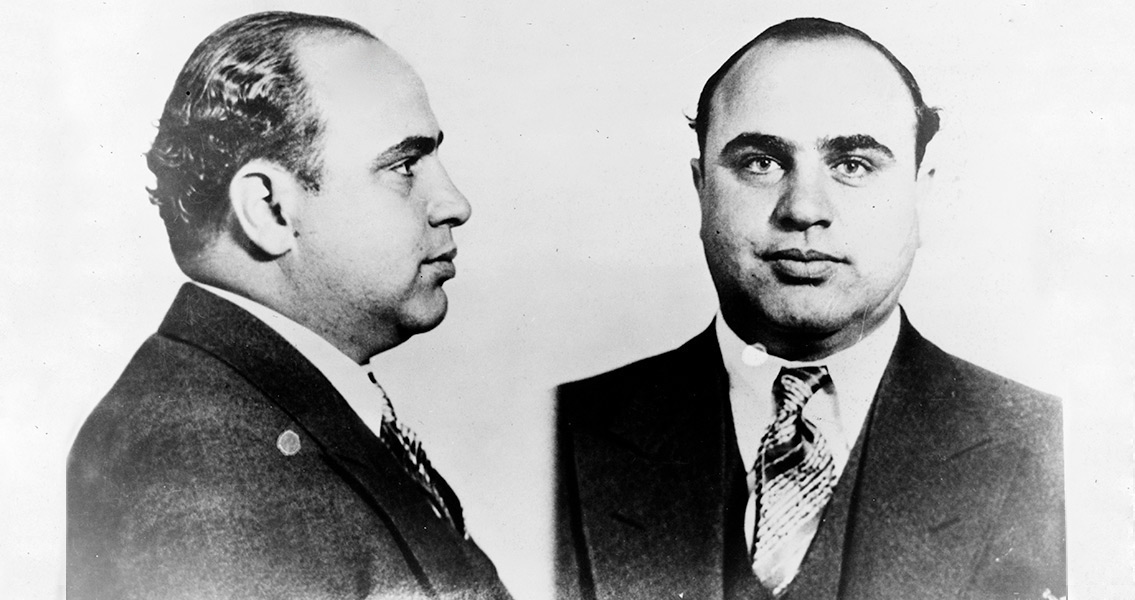<![CDATA[Valentine's Day's is predominantly connected with two things, romance, and horrific violence. The original legend of St. Valentine ends with the Christian priest being beaten and decapitated. As well as the anniversary of Valentine's death however, the 14th February also marks the anniversary of a brutal gangland massacre in Depression era Chicago, an event which signaled the rise of the notorious gangster, Al Capone. By 1929 organised crime had become familiar news in Chicago, but the massacre of seven men in the Valentine's Day Massacre seemed to take the issue to a new level. After the event, the press in Chicago began to question whether the authorities would ever be capable controlling of Chicago's growing underworld. Capone had risen to prominence during the years of prohibition. The Volstead Act of the 1920s had been intended to better American society, to curb the anti-social behaviour associated with alcohol and strengthen families. The social and psychological benefits of abstinence are debatable, what is clear is that prohibition facilitated the rise of organised crime. Bootlegging became a highly lucrative business, one which gangs were willing to kill over. Throughout the 1920s Capone worked to consolidate his power in Chicago, and in 1925 he took over from the crime boss Johnny Torrio. It is estimated that by 1927 Capone was earning up to $60 million from bootlegging, prostitution and gambling. This rise to power required Capone to ruthlessly dispense with his rivals in Chicago's brutal gang wars. Exact figures for the amount of killings that could be traced back to Capone do not exist, but a sense of the scale of the violence in 1920s Chicago can be felt. In 1924, authorities reported sixteen gang related killings. In 1929, sixty four killings were recorded. In 1929, Capone's biggest remaining rival was George "Bugs" Moran. Moran was Irish American, and ran his own bootlegging operation from a garage in the city. At 10:30 am on the 14th February, four men dressed as police officers burst into Moran's garage. They ordered the workers in the garage to line up against the wall, an act the men most likely carried out because they believed they were being raided by the authorities. As the seven men lined up, they were gunned down in a shower of machine, shotgun and revolver fire. Their assailants then fled in a fake police car - complete with siren At the time of the killing Capone was not even in Chicago, but Florida. In fact, at the moment the shots were fired he was being interviewed by the Dade Country solicitor in Miami, giving Capone the perfect alibi. Moran was en route to his garage when the shooting happened, thus narrowly avoiding the fate of his employees. Despite surviving the massacre, Moran's bootlegging operation could not carry on, his position as a rival to Capone was effectively finished. The event sent shockwaves through Chicago and the rest of the United States. Although in some ways a great success for Capone, firmly establishing him as Chicago's crime boss, the publicity the massacre attracted eventually brought about his downfall. American authorities had to respond to Capone, to prove the country had not descended into lawlessness. Federal authorities swiftly began to investigate him, and in May 1929 he was arrested for carrying concealed weapons. He served nine months in prison but was released for good behaviour. Most damaging for Capone was an investigation started by forensic accountants from the Inland Revenue Service. In June 1931, he was bought to trial for income tax evasion, for which he was eventually convicted and sentenced to eleven years in prison. The Valentine's Day Massacre was a gruesome statement of Capone's growing might in Chicago. It was also the event that cemented the celebrity status which ultimately brought about his downfall.]]>
The Valentine's Day Massacre
